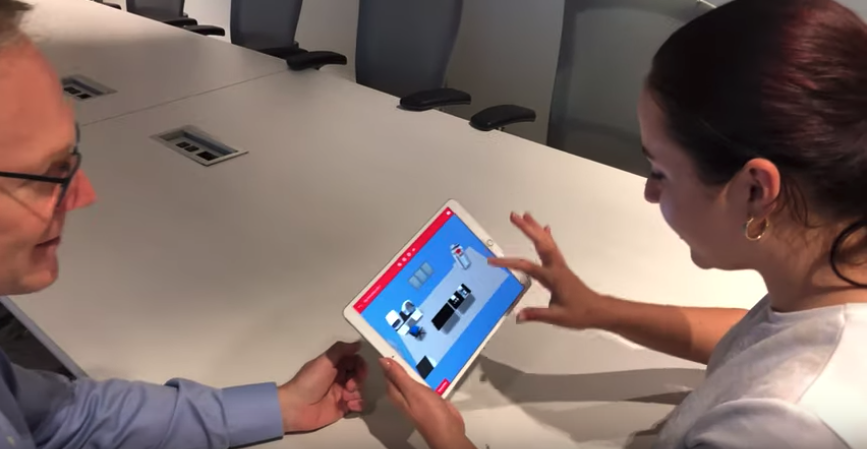

Until recently, diagnostic and research laboratories had never been in the public spotlight. That changed as the global focus shifted during the COVID-19 pandemic. Suddenly, nightly news stories brought diagnostic labs’ life-saving work – and also the limitations and, perhaps, mishaps – to mass audiences. That brought increased pressure to update, optimize, and process to an already stressful situation. Whether you are a device manufacturer helping labs update and optimize equipment and workflow or you are a commercial lab trying to refine your space to keep up with demand, it’s clear that the way we were working isn’t working.
“The world has changed, and the requirements are no longer static or even predictable. Not only do labs need to constantly respond to changes, they also need to be ready to rapidly adapt to brand circumstances (e.g., COVID-19, supply chain challenges, etc.). And they have to constantly balance automation and human workflow trade-offs, particularly in light of significant fluctuations in the labor markets. In addition, labs are often caught up in industry consolidations, requiring that some labs take on new or additional services.”
— Gavin Finn, President & CEO, Lab Design Tool
Labs are struggling with staff shortages like many industries. Unlike some other industries, however, these positions are highly skilled and difficult to backfill and train. In fact, one out of every 10 lab positions that are open today may never be filled. Additionally, one out of four lab managers will retire in five years. Though lack of talent is not necessarily the issue, it’s the distribution of talent across multiple departments and projects in different locations that can hinder workflow, and streamlining work has never been more crucial to the success of any given lab operation.
This has led to lab consolidation, redesigns for streamlined operations, and constant real estate assessments to ensure both mandated sustainability and cost conservation.
With time being a non-existent luxury for lab setup and modification, there is a need for a solution that allows the rapid simulation of changes in physical layouts without disrupting the workflow. Lab layouts are in constant flux as new tests, demands, and technologies arrive. Lab Design Tool can create an unlimited number of “digital twins” of a lab space to test iterations and new equipment. The shift to a digital lab design tool helps lab equipment manufacturers and lab managers test and show how to optimize workflow through digital simulations of new lab layouts.
The role of the lab operations/research managers is first and foremost to ‘get science done’ as efficiently and cost-effectively as possible. With fewer resources and a rapid move toward digital transformation, they are struggling to keep pace. While the digital transformation of labs is heavily focused on utilization tracking with IoT and overall asset management tracking, it is still in the very early pilot stage at most laboratories, and there are large gaps.
Labs are being re-arranged, moved, and consolidated all the time (weekly, monthly, every 3-6 months, etc.). The use of outdated tools such as graph paper or complex architectural CAD designs cannot keep pace with the speed of change, and this gap in digital transformation, and lack of digital tools to empower lab operations/research managers, is costing valuable time, money, and resources.
There is also a struggle to effectively communicate and collaborate early in the process with key stakeholders around ongoing changes (from small adjustments to large buildouts). This lack of communication and collaboration negatively impacts learning, information sharing, and the ability to support stakeholders, which leads to greater risks and potential safety issues that are more costly to address later in the project lifecycle.
The days of sticking Post-It notes on graph paper to visualize different layouts are fading. While we contrived analog solutions to fulfill the need in the past, digital transformation today is crucial in maintaining successful workflow throughout the ever-evolving lab sector and meeting present-day (and future) needs. The Lab Design Tool offers immersive virtual reality and augmented reality experiences to allow lab managers to virtually walk through their labs of the future to see implementations and changes before committing to a layout.
“Imagine, for example, putting a digital version of a centrifuge on a real workbench, and being able to use an iPad to walk around the workbench, and seeing the combination of the actual objects (workbench) and the digital object (centrifuge) in the same screen as if they are both there in the real world at the same time. This can also be done for an entire lab layout (either in full scale, or in reduced size to fit on a conference table).”
— Gavin Finn
Interactive team-based approaches to lab configuration with the Lab Design Tool allows all stakeholders to propose layouts and modifications in a collaborative environment. When time is of the essence, everyone can collaborate in real-time to weigh the cost and benefit of every option. With lab optimization being the top priority, the ability to simulate and scrutinize is instrumental in factoring budget, labor, supplies, and workflow. In an ever-changing environment, a digital tool that so quickly and easily portrays real-life applications is a requirement.
Are you ready to optimize your lab’s operations in a way that’s 100% future-proof? Will your team be able to withstand the ever-changing need for efficiency in spite of today’s obstacles?
At Lab Design Tool, we understand the process of digital transformation is constant. We’re committed to providing education that guides companies as they work to solve challenges.
Schedule a demo to see how quick and easy it is to lay out and optimize a new lab, relocation, or existing lab, in minutes.